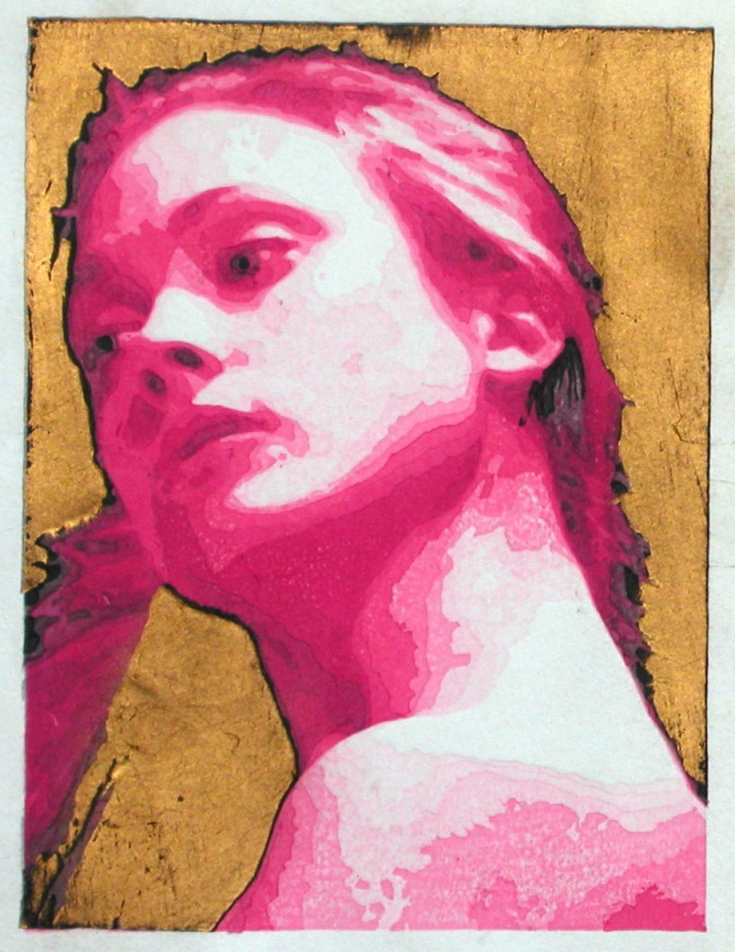This is a two-block reduction printed on 48 sheets completed April 12, 2003 after five days of carving and printing.
I was unhappy with the reds in the face and arm of my previous print. I had wanted those to be very intense, vibrating against the blues of the robe. But the color never vibrated and I had a lot of trouble developing the intensity I’d desired.
The current print, “Combing Hair” is another attempt to develop some vibrant color and I feel it is more successful. Instead of shades gray (sumi) played against shades of a single color, I used two different reds, quinacridone red (rather pinkish) and quinacridone magenta (similar in color to Alizarin Crimson). There were eight block states of red and seven of gray which I printed progressing from palest to deepest shades. The palest reds were printed with the quinacridone red, and from block five I added quinacridone magenta in increasing proportion until block eight was pure quinacridone magenta. I selected the quinacridones because I feel they have great transparency and I didn’t want the light grays I’d printed early on to be obscured by the deepest reds I printed later. This worked very well the dark tones in the shaded parts of the throat, for example, are from very pale grays printed underneath six to eight red printings.
The blocks were 3 / 4 ” basswood. The paper is #23 New Hosho from the Baren Mall. This is a fairly thick and soft paper which really was not strong enough to stand up to the fourteen to sixteen printings to which I subjected it (the Yamaguchi Hosho holds up much better to many overlapped printings). After only four to six printings, this New Hosho paper showed a marked tendency to fall apart and long fibers pulled from the printed surface. For embossing or for printing less than five or six overlapped areas though, this is a beautiful and reasonably priced paper, I think. It has a great “hand”, especially when wet! Wonderful to feel! Luxurious!
The black background is sumi printed on top of a number of layers of pale red and pale gray which made a silvery gray you can still see beneath the ear and around the edges of the hair. Then three printings of pure sumi were made in order to produce as intense a black background as possible.
I experimented with a number of the sheets, applying a mica background to one (silver gray and sparkly), a deep red powder pigment (ooooh!), and a lustrous metallic gold (antique bronze) powder which really gives an Italian Renaissance feel to the print. But the most striking examples are the majority — those with the deep black background as illustrated above.

